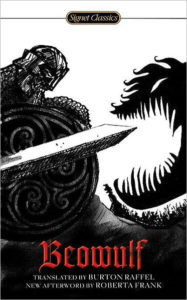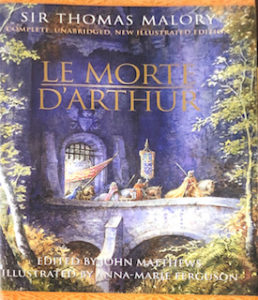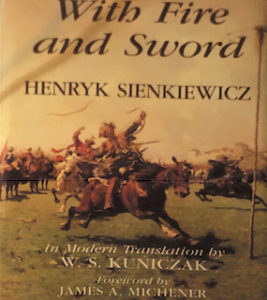Welcome to the cKotch.Com blog. I’m Christopher Kotcher, and this is The Written World. Time to explore the worlds which writers have made.
Last Time with the Epic Chart…
We began covering the Epic Chart last week in Part 1.
This chart came from my AP World Literature class in high school. The table focused on seven epics which reflected the development of western civilization.
Last week’s post centered around Greco-Roman epics, specifically, epics surrounding the mythical Trojan War.
The blind poet Homer’s Iliad and Odyssey emphasized the Ancient Greek preoccupations with conquest and domination.
The pastoral poet Virgil’s Aeneid represented Rome succeeding Greece as the world’s next great conqueror, all done on behalf of Trojan vengeance of course.
With the next three epics, we now reach a point where culture begins to shift from the old warrior ideals to newer values of compassion and self-sacrifice.
Primarily, these changes will result from a Christian influence.
You see, while many conquerors have attached themselves to Christianity to appear righteous, the religion is ultimately based on Jesus Christ. He was believed to have saved humanity not by dominating past conquerors, but by sacrificing himself out of love.
In many ways, this moral vision was incompatible with the lifestyle preached by prior epics.
While many scholars still learned the classics to understand their cultural heritage, people still needed new stories to guide them in their lives, new heroes to be ideals for them.
The Epic Chart’s three English epics will be a good starting point for examining how new epics developed according to these wider cultural trends.
They will also prepare for us the final entry on the chart to be covered in Part 3.
The Monster Hunter

The Christianization of epics began with Beowulf. Monks crafted this Old English epic by combining tribal tales of the fearsome Geat warrior Beowulf.
(The Geats were a Germanic tribe which lived in Medieval Sweden.)
Three great monster hunts form the tale.
Young Beowulf goes to rescue the Danes from the ferocious beast Grendel. The scaly monster had been plaguing King Hrothgar’s hall for over a decade.
Grendel’s vengeful mother soon leaves her swamp to reclaim her son’s arm, held up as a trophy in Hrothgar’s hall after Beowulf defeats him. She even slays one of Beowulf’s troops on her way out. So, Beowulf storms her swamp and takes her out.
Years later, Old King Beowulf learns of a dragon plaguing Geatland. With the help of the young hero Wiglaf, he slices the monster in half.
Unfortunately, the dragon’s toxic tusks stab Beowulf during the hero’s final attack. The hero dies, having recovered the dragon’s stolen treasures and sparing the Geats of its wrath.
Look at how things have changed.
Beowulf’s heroism is not based in conquering his fellow men or in slaying rival heroes. He gains glory by protecting others from pure evil. Any treasure he gains is either a gift given by friends or stolen goods reclaimed from monsters.
Beowulf may boast of his strength, but the story assures he can backup every word he says. He is not arrogant, merely confident. He generally only shows off when he needs to.
For example, Beowulf’s most famous boast in the story, detailing his experience swimming the ocean and slaying sea serpents with his bare hands, happens only because some of Hrothgar’s men doubt him. His brag is meant to resolve any concern he can’t handle Grendel.
Ironically, the Christian influence is most seen in the book’s first monster.
Grendel comes from the biblical figure of Cain, the world’s first murderer. Cain’s sin corrupted his line down the generations. His descendants all eventually became horrible monsters.
The conflict in Beowulf is based on defeating evil incarnate in three forms. Beowulf slays no soul with a trace of good. Likewise, his eventual death is tragic but also brings victory against the epic’s final evil.
The King and His Knights

After Beowulf came the imprisoned knight Sir Thomas Mallory’s Le Morte d Arthur.
Mallory collected English and French tales of the mythical King Arthur and his Knights of the Round Table. The writer compiled them into one epic.
Arthur goes through his usual story beats here.
His kingship is recognized upon pulling the Sword in the Stone. He receives Excalibur from the Lady of the Lake. His knights search for the Holy Grail. He is mortally wounded in battle with his son Mordred.
Changing cultural values are seen in how knights praise service and chivalry over conquest and domination. They even swear loyalty to Arthur on the Christian feast of Pentecost.
(Pentecost is when the Holy Spirit descended on Jesus’ Apostles. The Spirit then sent them forth to serve in Jesus’ name. Similarly, Pentecost allows Arthur’s knights to serve in his name.)
All tragedy here stems from sin.
Sir Lancelot falls from grace thanks to his affair with Arthur’s wife Guinevere. Mordered is born from Arthur’s affair with his sister Morgause. Mordred is put on the path to evil after Arthur tries to kill him as an infant.
In many ways, this epic represents warriors struggling to uphold lofty new ideals in a sinful world. They yearn to be models of justice, only to meet tragic ends thanks to human failings.
King, or Servant?

All this leads to the Epic Chart’s most Christian epic, preacher John Milton’s Paradise Lost.
The bright angel Lucifer rebels against God. With one blow, the Son of God banishes Lucifer and all his supporters from Heaven.
Now in Hell, Lucifer takes the devilish name of Satan. He riles up his troops with a speech on how he would rather reign as a king in Hell than be a mere servant in Heaven.
Soon, Satan remembers God discussing a new prized creation, humanity. He departs to ruin humanity in attempt at vengeance against God.
So, with a plot like that, why would the Epic Chart list Satan in the hero column? Sure, he’s got a question mark by his name, but he’s still listed there.
Well, think back to how heroes have been defined in the chart’s prior epics.
Satan represents the ancient world’s sense of heroism. He is a proud conqueror and aspirational ruler. He seeks glory through dominating others. He lives according to the law of vengeance.
Milton subverts these old traits. He shows how twisted and depraved the pride and arrogance of the classic heroes could really be if they weren’t on your team.
Heaven’s residents, then, model the new cultural ideals.
The Son of God sees Satan sneaking to Earth. He vows to be born into humanity to undo any damage the devil may do to us. The Son of God will willingly step away from Heaven for a time to become Jesus.
The archangel Michael aids the first man Adam in seeking forgiveness for his sins after Satan has tempted and corrupted him.
Michael even presents Adam a vision of the whole of human history to balance the man’s hopes and fears. Adam walks away, ready to work with his wife Eve to abandon sin and be good once more.
Again, self-sacrifice, service, and compassion are presented as the chief values here.
In fact, the new ideals had become so ingrained by the time of Milton that he was could expose the faults of the old heroic values of conquest and domination by assigning them to the devil himself.
The New Ideals
Culture has begun to change across these three epics.
Conquest and domination have been replaced by service and self-sacrifice. The old ideals have become traits of monsters and villains. Defending those you love replaces destroying those who oppose you.
New heroes emerged to model these new ideals. Writers found their own ways to generate these heroes, whether they be older heroes assigned the newer values or heroes created entirely according to the new values.
The adaptability of epics really is something impressive. A genre originally meant to encourage conquerors became a way to model the behavior of defenders.
Next week, we will look at one last entry on the Epic Chart. This entry will be the perfect summary of everything we have covered here. It will be a good model for how epics can continue to evolve in our current world.
Get ready. We’re going tackle Poland’s take on epics.

Discussion Time!
What do you think of my thoughts here on this week’s epics? Do you think I gave a good look into how they developed from the epics we featured last week?
Also, how do you think this final epic being covered may tie everything together?
Kotcher’s Call to Action
If you like my content and wish to see more, you could check out my books Five Strange Stories and Good Stuff: 50 Poems from Youth on Amazon. They are enrolled in the Kindle Matchbook program, so anyone who buys the paperbacks can also get the eBooks for free.
Finally, be sure to like my Facebook page and share it with your friends. I post a link there whenever a new blog post goes live each Friday at 5:00 PM EST.
